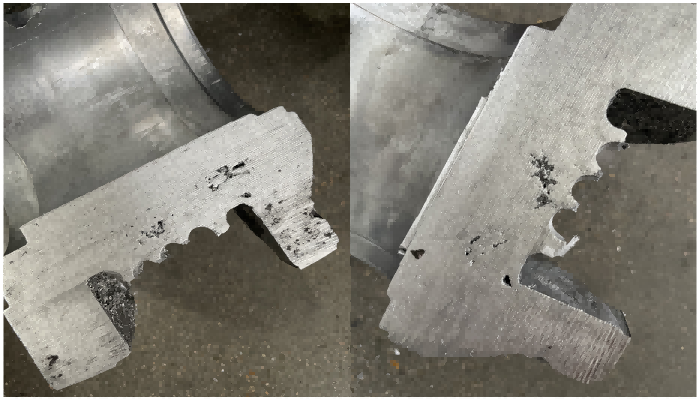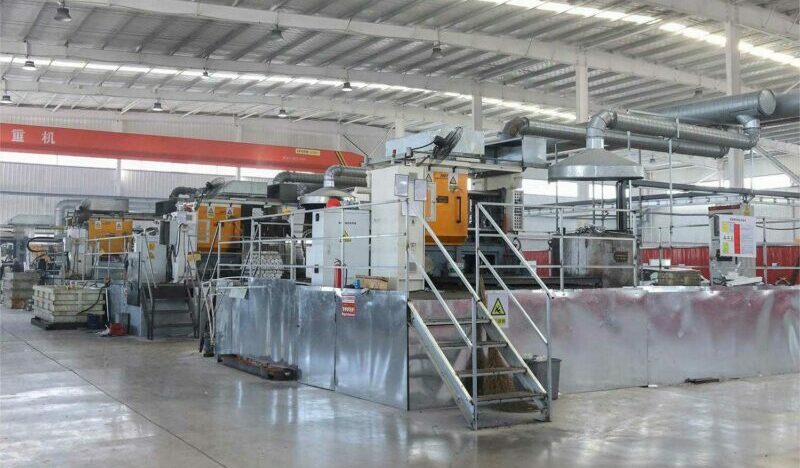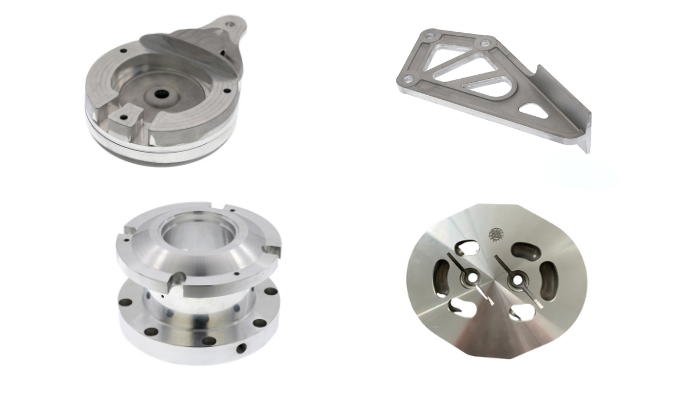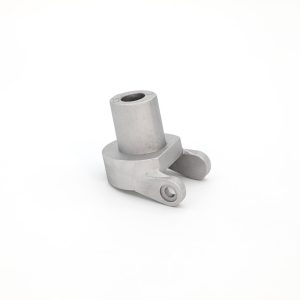Porosity is a common defect in die castings. Gas porosity and shrinkage porosity are mainly two types of porosity in casting.
Squeeze casting is a powerful manufacturing technique that effectively prevent porosity in castings. The combination of pressure and heat during solidification leads to denser and more reliable components. The specially designed feeding method along with an venting system can effectively purge air from the feeding process. This technique is particularly effective in reducing or eliminating porosity in castings, beneficial for applications requiring high strength and structurally sound metal casting parts.

What Causes Porosity In Casting
There are many reasons for the formation of die casting porosity. Here we discuss two main causes of casting porosities.
- The metal injection speed in the casting process is very fast, this process is easy to roll air and other gases, resulting in a large amount of air brought into the mold. As the metal solidifies, these trapped gases create voids or porosities in the casting.
- In the die casting process, the metal forming time is too short to make up for the shrinkage, the molten metal doesn’t completely fill the mold cavity, resulting in the thick-walled places easy to have shrinkage holes and shrinkage loose.
- Improperly designed molds with inadequate venting can trap air and gases, preventing them from escaping during the casting process.
Problems Caused by Porosity In Casting
- The presence of die cast aluminum gas porosity causes a significant reduction in the mechanical strength of the die casting.
- Die castings with porosity cannot be heat treated. Heat treatment will cause the gas inside the die casting to expand by heat, resulting in damage to the casting, and will also form many bulges on the surface.
- Die castings with porosity are limited in subsequent machining. Machining can lead to leakage of internal pores and shrinkage.
- Die castings cannot be weldedbecause of the porosity.
Stop Porosity with Squeeze Casting Process
“how to avoid porosity in casting” is a main concern in the die casting process design. However, porosity is difficult to be solved entirely by process optimization. The good new is, our squeeze casting process can solve this problem effectively. Squeeze casting could obtain cast parts without porosity.
As an advanced casting process, squeeze casting has many advantages over high pressure die casting. Squeeze casting could remove porosity in castings by below ways.
- Low feeding speed and low fluid resistance, which can effectively reduce the amount of gas carried in.
- Separation of air and liquid metal can be achieved during the feeding process. Gas is gradually discharged from the system with the feed.
- The huge pressure at the moment of forming can further expel the gas and improve the strength of the casting. This feature is similar to forging.
- Flexible design of mold allows the gas to be completely exhausted before the casting is formed.This helps to avoid gas porosity defect in casting.
- Strong shrinkage filling ability: The shrinkage holes produced in metal solidification will be pressed together during the high-pressure molding process.This helps to avoid shrinkage porosity in casting.
Squeeze Casting Capability in CEX Casting
- Squeeze Casting Machine (patented): 300T~1100T
- Material: A356/A356.2/A380/AlSi10Mg/A319S/AlSi9Cu3
- Weight: 50g~20kg
- Maximum size: 1.2m*0.8m
- Wall thickness: 4mm-25mm
- Tolerance: blank ±0.2mm, ±0.01mm after machining
Stop Porosity with Our Patented Squeeze Casting Machine

Our squeeze casting machine is designed by ourselves and applied for Chinese patent. Our squeeze casting machines have been continuously upgraded from the first generation, and have been developed to the fourth generation.
The Application of Porosity Free Squeeze die Castings
- Parts with high requirements for mechanical strength, such as automotive parts.
| Yield strength / MPa | 220-240 |
| Tensile strength / MPa | 260-300 |
| Hardness / Hb | 80-100 |
| Elongation% | 4-10 |
Mechanical properties of A356-T6 squeeze castings
- Parts with high requirements for surface sealing performance, such as pump parts, valve parts.
- Parts that require subsequent welding.
- Parts requires very high strength.
- Parts requires high pressure.

For more developed cases, you can contact us directly to get our case study.
Need Help?
CEX Casting has our own patented techniques and production facilities in the field of squeeze casting. Our squeeze castings have helped many customers solve the problem of die casting porosity and other common die casting defects.
If you are stuck with the porosity of your die casting, contact us directly. we are happy to help you with our years of experience in squeeze casting applications.
If you do not have a specific project and are just interested in squeeze casting, you are also welcome to contact us. We are happy to share our knowledge about squeeze casting.
-CEX Casting
www.cexcasting.com

